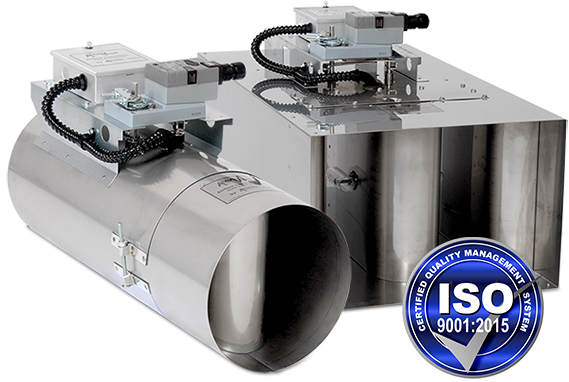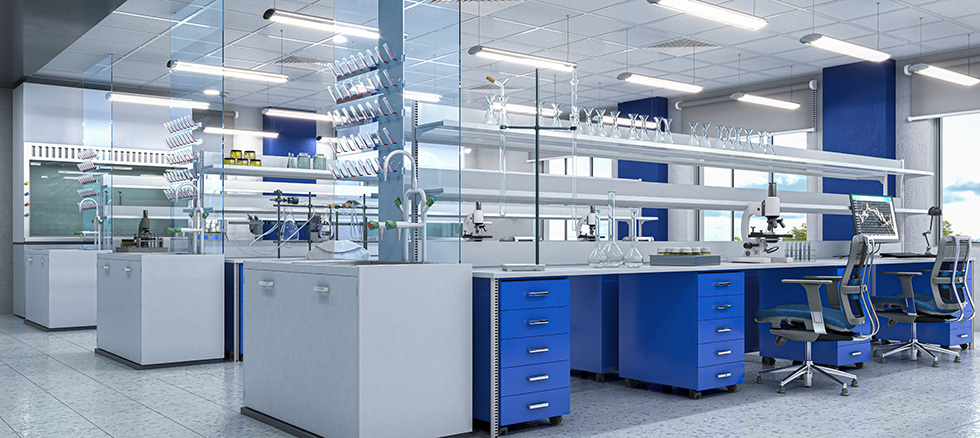Since the 1990s, retrofitting laboratory spaces has meant anything from upgrading to more energy-efficient variable airflow control (VAV) to providing the most energy-efficient fume hoods and control logic. Through the years, laboratory design has gone through a tremendous transformation. Gone are the days of a simple laboratory with one or two constant volume fume hoods. University, research and healthcare science and technology require a much more thoughtful approach to space utilized by its staff and students.
Creating Sustainable Critical Spaces
Today, existing structures are moving toward sustainable design and operation, such as downtown office buildings that are transitioning to research spaces or older laboratories that are being upgraded. There is a significant movement that recognizes the impact of carbon emissions on buildings, and laboratories are notoriously the highest energy users in university science buildings and research facilities. Hence, laboratories are some of the most crucial areas of concern for decarbonization in the future.
Owners and engineers typically join in this essential discussion to ensure a proper direction for a sustainable future. Understanding the current and planned uses for these critical spaces’ is pertinent to meeting staff safety and comfort while attaining responsible energy goals.
Critical Space Airflow Control Solutions
The airflow valve utilized to control the laboratory space is one of the most critical choices an owner and engineer will make when designing and installing a sustainable airflow control system. Retrofitting previously installed systems and retrofitting existing building spaces into laboratories are not without higher costs. Owners see opportunities to switch to or engage with products that will give them more system flexibility, significant energy savings, and, in some cases, the ability to utilize their current BAS contractor for direct control. For these reasons and others, the airflow valve’s design matters greatly. Specifically designed to meet these demands is the award-winning AccuValve® airflow control valve.

The Award-Winning AccuValve Airflow Control Valve
Installation: When the original venturi valve manufacturer replaces their own valve with a newer, lower-pressure alternative version, the valve size is increased. This increased valve size means more cost (and interruption) for ductwork transitions. In contrast, the AccuValve is nearly identical in dimension to older venturi valve installations, thereby simplifying replacement. This attention to sizing alleviates additional costs to the owner by allowing a one-for-one replacement without transitions in most cases. In addition, unlike venturi valves, the AccuValve can be mounted in any orientation and does not require straight duct runs before and after the valve. The orientation flexibility eliminates any potential field installation issues when there are complicated or tight areas. This is especially important when retrofitting spaces that will become critical operating environments.

The AccuValve — Mounting at Any Angle. No Straight Runs Required.
Energy Savings: Most older installations will have valves requiring an excessive operating pressure drop. The AccuValve’s design reduces the overall system pressure requirement, saving tremendous energy dollars. Another benefit of operating at lower pressures is reduced sound levels, making for a much quieter environment.
Owner Flexibility: The AccuValve is designed with the owner in mind when retrofitting their older critical environment control system with energy-efficient technology. The AccuValve offers owners maximum retrofit flexibility from a phased approach to replacing an entire system. In addition, the owner can also decide if they want to keep a stand-alone control system in their laboratories or have their own Building Automation System take direct control of the spaces.
For the Designer/Engineer
- Simplified layout without the need to be concerned about the mounting position or duct layout
- Ability to choose an airflow valve for either flow range or by operating pressure, which can maximize system static pressure savings
- A product that can meet ASHRAE 90.1 standard for Demand Based Static Pressure Reset Control without the need for additional parts and pieces throughout the building ductwork
- Peace of mind with the safety of true airflow measurement
For the Installer
- Ease of installation without concern about duct mounting arrangement – can mount in any position
For the Owner
- Flexibility of product allowing direct control by Building Automation System (BAS) or as a stand-alone critical environment airflow control system providing full communication (e.g., BACnet®) to the primary building automation system
- Simplified understanding and ability for independent owner change control of complicated fume hood control systems
- No recalibration of the airflow valve is required
- Peace of mind that they will always know the true airflow affecting the operation of their critical systems and the safety of staff and clients
- Maximized sustainable energy savings for the life of the building
- Capability for Demand Based Static Pressure Reset Control without the need for additional parts
Redesigning existing laboratories for sustainable energy reduction, updated usage, and repurposing commercial spaces into critical environment spaces requires thoughtful planning. Our experienced staff at Accuspec, Inc. is available to assist in providing application-specific cost-efficient energy-saving options such as the AccuValve for your next project. Please call us at 203-261-8100 or email us.


















